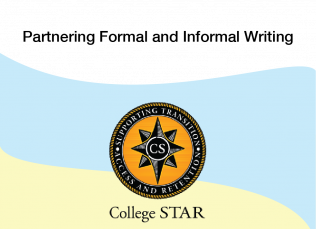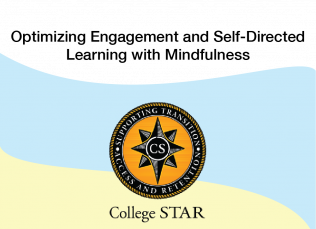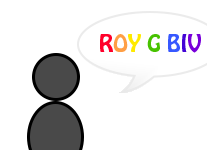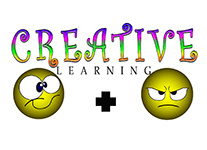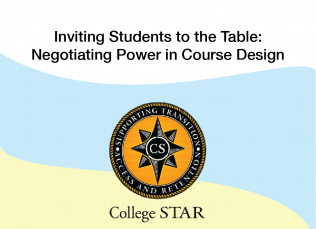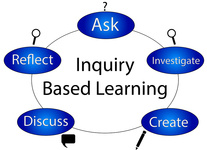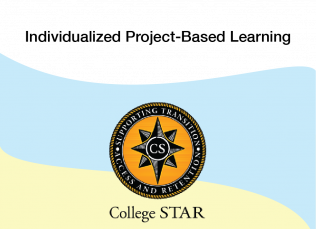Module Link
This resource was originally developed with resources from the College STAR grant. That grant has ended and the College STAR modules will now permanently reside at the East Carolina University Office for Faculty Excellence.
Module Introduction
“How do you feel about writing?”
I typically pose this question on the first day of the semester in a “vote with your feet” exercise. We line up across the room: at one end are those who enjoy writing and feel confident in their abilities and at the other end are those who dislike writing altogether. Students find a place along the spectrum and share their reasoning out loud. Many students cluster near the middle, where a plethora of fears and anxieties spills forth:
“I never know how to get started.”
“I can never make it long enough.”
“It's ok if I’m writing about something I know.”
“I’m never really sure what the teacher wants, or if its good enough.”
I usually place myself somewhere near the center. “I’ve been told I’m a good writer, but I have such a hard time getting started. I never know what to say, or I say too much.” Many students will nod in sympathy. A show of hands reveals that many of us often feel overwhelmed when starting a writing project.
As an instructor in a Writing Intensive course, I teach both writing skills and disciplinary content. As I design my courses each semester, I aim to weave these together in ways that are mutually supportive and that address students’ concerns. Throughout the course, I want to foster writing as an ongoing habit and give students multiple opportunities to engage with writing. One powerful strategy for doing this is through Daily Writing assignments.
In this module, I will share my experience using frequent, short writing assignments to prepare students to be successful in a longer, formal assignment. This module focuses on the design of the jazz dance unit within my History of Dance I course, a Writing-Intensive designated course at ECU. The process of considering the content and writing skills for a particular assignment and then designing shorter assignments to lead up to it can be used by instructors in a variety of disciplines.
Scaffolding instruction and UDL
The teaching process described in this module uses frequent, low-stakes informal writing prompts that are deliberately designed to scaffold the writing process, leading students to develop the content knowledge and writing skills needed for a specific formal writing project while at the same time generating, in manageable chunks, material that can potentially be incorporated into that project.
The term “instructional scaffolding” is used by Applebee and Langer (1983) to describe a process that “allows the novice to carry out new tasks while learning strategies and patterns that will eventually make it possible to carry out similar tasks without external support” (p. 169). In the case of a college writing project such as the one described in this module, the complex writing is a new task, and support is provided to learn the strategies and patterns for accessing content knowledge and deploying it with discipline-specific writing skills.
The process of scaffolding instruction through informal writing assignments is one way to implement UDL Principle 2: “Provide multiple means of action and expression,” specifically Checkpoints 5.3 “Build fluencies with graduated levels of support for practice and performance” and 6.2 “Support planning and strategy development” (CAST 2012). An instructor, working backwards from the goal of the finished paper, considers the constituent knowledge and skills and designs shorter writing assignments that provide support in the form of focused questions, templates, or prompts for brainstorming. Collectively, these assignments can guide students through the planning process of a major writing project, preventing total procrastination and encouraging students to develop a process-oriented approach to writing that may transfer to future projects.
Applebee and Langer (1983) explain the steps that teachers, as designers of instruction, take to create the scaffolding that will allow their students develop as writers:
Teachers approaching instruction from this perspective must a) determine the difficulties that a new task is likely to pose for particular students, b) select strategies that can be used to overcome the specific difficulties anticipated, and c) structure the activity as a whole to make those strategies explicit (through questioning and modelling) at appropriate places in the task sequence. (p. 169)
This module describes how these three steps were adapted to create scaffolded instruction in a writing-intensive course. Just as a scaffolding is used to facilitate the construction of a building and then removed when it is no longer needed, scaffolded instruction helps students to work through the steps to a process that they may not be ready to take on independently. Key to this process in a writing-intensive course is the use of frequent, low-stakes assignments that function as the braces, brackets, and platforms students use as they construct a formal writing project.
Support for this Module
Original development of this module was made possible by the College STAR (Supporting Transition Access and Retention) initiative. College STAR was a grant-funded project focused on partnering postsecondary educational professionals and students to learn ways for helping postsecondary campuses become more welcoming of students with learning and attention differences. Much of this work was made possible by generous funding from the Oak Foundation.


